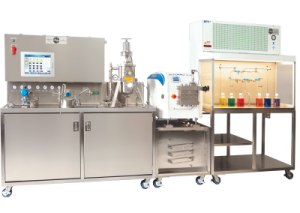
The dairy industry is a cornerstone of many diets around the world, providing essential nutrients through milk and milk products. However, ensuring the safety and longevity of these products has always been a challenge due to the perishable nature of milk. This is where ultra high pasteurization (UHP) comes into play, offering a revolutionary method to extend shelf life and maintain the safety of dairy products without compromising their nutritional value.
What is Ultra High Pasteurization?
Ultra high pasteurization, also known as ultra-pasteurization, is a process that heats milk to at least 280°F (138°C) for a minimum of two seconds. This is significantly higher than the temperatures used in traditional pasteurization methods, which typically involve heating milk to about 161°F (72°C) for 15 seconds. The key advantage of UHP is that it effectively kills all bacteria and pathogens, resulting in milk that can last much longer than traditionally pasteurized milk.
The Science Behind Ultra High Pasteurization
The process of UHP involves rapidly heating milk to the target temperature and then cooling it down quickly. This high-temperature, short-time (HTST) method ensures that harmful microorganisms are destroyed without significantly altering the taste, texture, or nutritional content of the milk. The rapid heating and cooling process minimizes the risk of cooked flavors developing, which can be a concern with prolonged exposure to high temperatures.
Benefits of Ultra High Pasteurization
- Extended Shelf Life : One of the most significant benefits of UHP is the extended shelf life it provides. Ultra-pasteurized milk can last up to 60-90 days when unopened and refrigerated, compared to the 7-10 days typical for conventionally pasteurized milk. This makes UHP milk a convenient option for consumers who may not use milk quickly.
- Safety : UHP effectively eliminates all pathogenic bacteria, including those that can cause foodborne illnesses such as Listeria, Salmonella, and E. coli. This makes ultra-pasteurized milk a safer choice for vulnerable populations such as children, the elderly, and those with compromised immune systems.
- Nutritional Integrity: Despite the high temperatures used, UHP preserves the nutritional content of milk. Proteins, vitamins, and minerals remain largely intact, ensuring that consumers receive the same nutritional benefits as they would from traditionally pasteurized milk.
- Convenience: The extended shelf life of UHP milk reduces the frequency of grocery shopping and helps minimize food waste. This is particularly beneficial for those living in remote areas or with limited access to fresh groceries.
Applications Beyond Milk
While milk is the primary product subjected to ultra high pasteurization, other dairy products can also benefit from this process. Creams, half-and-half, and some types of flavored milk are often ultra-pasteurized to extend their shelf life and enhance safety. Additionally, UHP can be used for non-dairy beverages such as plant-based milk alternatives, offering the same benefits of extended shelf life and safety.
Ultra High Pasteurization vs. UHT
It is important to distinguish between ultra high pasteurization and ultra-high temperature (UHT) processing, as they are often confused. UHT processing involves heating milk to a temperature above 275°F (135°C) for 2-5 seconds and then packaging it in sterile containers, resulting in milk that can be stored at room temperature for several months. While UHT milk has an even longer shelf life, it often has a slightly different taste and texture compared to UHP milk, which retains a fresher taste and requires refrigeration.
Consumer Perception and Market Trends
Consumer awareness and acceptance of ultra high pasteurization have been growing steadily. As people become more health-conscious and seek convenient yet nutritious food options, UHP milk and dairy products are increasingly popular. Market trends indicate a rising demand for long-lasting, safe, and high-quality dairy products, positioning UHP as a key player in the future of dairy processing.
Environmental Impact
Ultra high pasteurization also has potential environmental benefits. The extended shelf life of UHP milk means fewer deliveries and reduced transportation emissions, as well as less food waste. Additionally, the process itself is highly efficient, often requiring less energy than traditional pasteurization methods due to the shorter heating time.
Challenges and Considerations
Despite its many advantages, ultra high pasteurization does come with some challenges. The initial cost of UHP equipment is higher than that for traditional pasteurization, which can be a barrier for smaller dairy producers. There is also a need for consumer education to ensure that people understand the benefits and proper storage of UHP milk.
Future Outlook
The future of ultra high pasteurization looks promising, with ongoing advancements in technology expected to further improve the efficiency and affordability of the process. As the demand for safe, convenient, and long-lasting dairy products continues to grow, UHP is likely to become an even more integral part of the dairy industry.
Conclusion
Ultra high pasteurization represents a significant advancement in dairy processing, offering numerous benefits in terms of safety, shelf life, and convenience without compromising nutritional quality. As consumers and producers alike recognize the value of this innovative process, ultra-pasteurized products are poised to become a staple in households around the world. Whether you are a dairy farmer, a health-conscious consumer, or simply someone looking for ways to reduce food waste, ultra high pasteurization provides a compelling solution in the modern food landscape.
